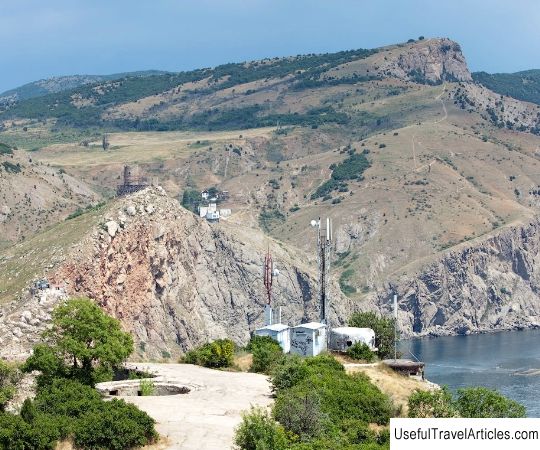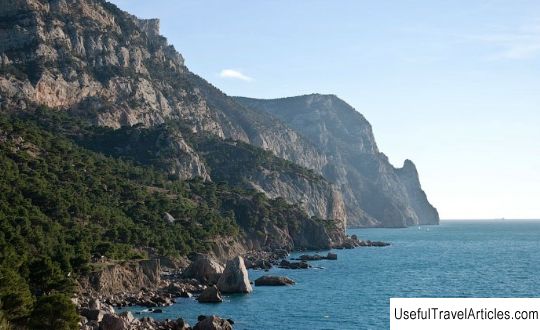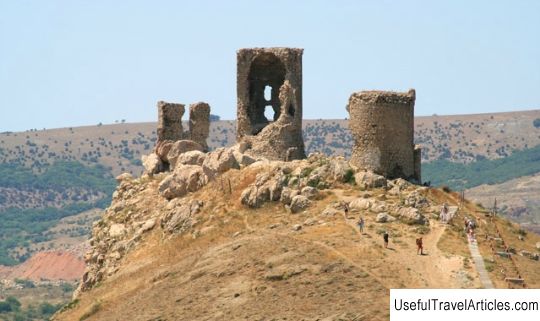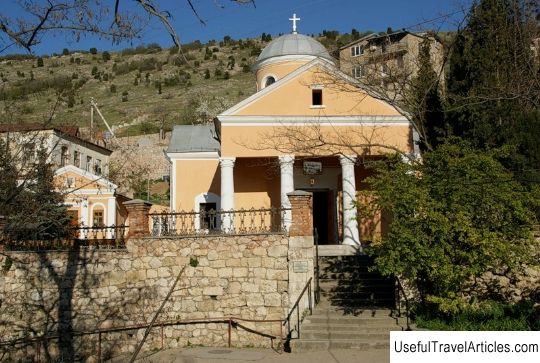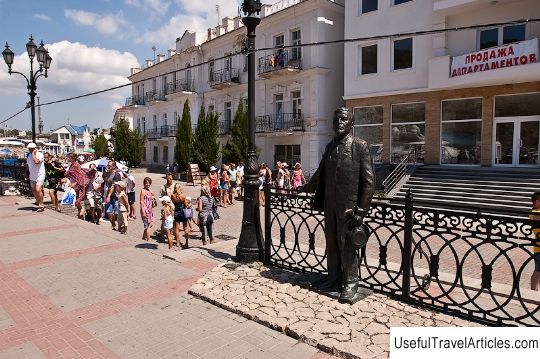Naval Museum description and photo - Crimea: Balaklava
Rating: 7,9/10 (1987 votes) 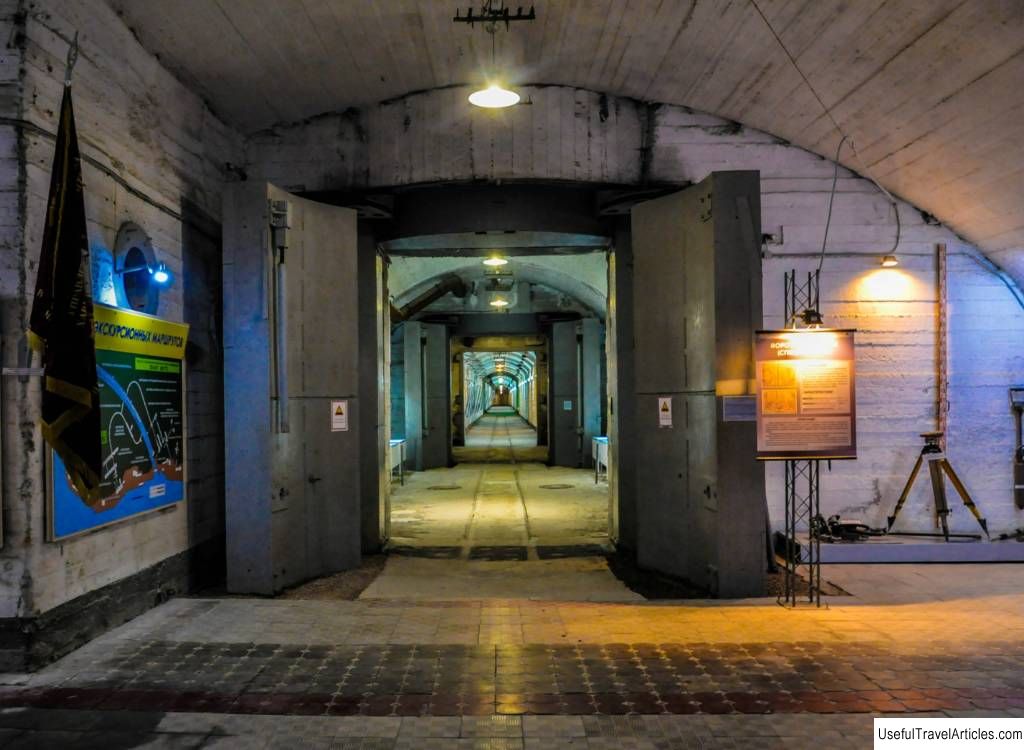
Naval Museum description and photos - Crimea: Balaklava. Detailed information about the attraction. Description, photos and a map showing the nearest significant objects. Photo and descriptionThe Historical Naval Museum in Balaklava opened in 2003, ten years after the official closure of the secret underground shelter for submarines, officially designated in the documents as " object 825 GTS ". The letters "GTS" in the name were deciphered as "hydraulic structure". In addition to the submarine base, the complex also included a repair plant. This is one of the most interesting attractions for those who are interested in modern history and military affairs. It is often called the " Cold War Museum ", because the expositions tell exactly about the times of the arms race and the constant fear of nuclear bombings. Another name of the museum is Submarine Museum . History of the complex"Object 825" in Balaklava was designed under Stalin. His project, intended to shelter the submarine forces of the Black Sea Fleet in case of a nuclear war, was presented to the leader of the USSR in 1953 and personally endorsed by him. Construction of the secret building began in December of the same year. For complete secrecy, plans were issued to the builders in stages, only after the completion of the previous part of the work. After the completion of the construction, all classified documents were seized. Entry to the territory of this construction site since 1957 was allowed only with special passes. By 1961 the underground submarine repair plant was built. Two years later, construction began on the Arsenal , which was supposed to become a technical base, which prepared ammunition (including nuclear ones) for both submarines of the Black Sea Fleet and surface ships. Arsenal got its own name. It was called "Object 820 RTB of the USSR Navy". RTB means "repair and technical base". In the official documents of the Ministry of Defense, the base was referred to as " military unit 90989 ". In 1959, about thirty officers from the northern naval training ground "Novaya Zemlya" arrived here to complete this base. Together with them arrived the first commander of the base, captain of the first rank N.I. Nedovesov. All production at the base was in charge of the first deputy commander, chief engineer of the military unit. A. E. Dorokhov became the first chief engineer of Balaklava RTB . Atomic ammunition storageThe entire staff of the base signed a nondisclosure agreement. The first nuclear charges were placed in the Arsenal storage facility already in 1959 . These were the warheads for the P-35 missiles, which were in service with the missile cruisers of the Black Sea Fleet. After the underground structures were completed, the personnel of the base began to live in a military town on the west bank. Nuclear charges were delivered by rail, across a pontoon bridge to the bay. In order to maintain secrecy, the road was closed with five-meter shields on both sides. In addition to charges for ship weapons, the Arsenal also stored charges for coastal complexes and missile weapons of submarines. In case of war, in the city of Balaklava, on Stroitelnaya Street, hosted a military unit 20553 - "Mobile repair and technical base". Its task was to disperse nuclear charges in field positions. This military unit was created in 1961. At the same time, the first exercises were held to test the movement of nuclear weapons in the event of a threat of war . For two weeks, the personnel trained to move nuclear weapons from the Arsenal to the field and issue them to ships and to the coastal units of the Black Sea Fleet. Including on submarines, one of which arrived in the area of the village of Chernomorskoye especially for these exercises. For conventional, non-missile, submarines, nuclear charges for torpedoes were stored in the Arsenal. In total, six types of nuclear weapons were stored at the base. A special group of the military was responsible for their storage. The ammunition was stored in two rooms. The large one contained torpedo charges, each in a separate container. In the second - for cruise missiles and anti-submarine missile-torpedoes. They were regularly checked every two years. All operations were carried out according to special instructions in a strict sequence, checking one product took about seven hours. The work was carried out under triple control: the responsible manager, the supervisor and the head of the calculation. All the technicians were wearing a jacket and x / b pants, and the soles of their shoes were stitched with metal threads to relieve static electricity. The entire tool was chrome-plated to prevent metal particles from falling on special products. A special temperature regime was maintained in the storage facility. This Arsenal was one of the three naval bases for storing special ammunition of the USSR Black Sea Fleet. After the collapse of the Soviet Union, military unit 90989 was disbanded, and atomic munitions were sent to manufacturing plants. Submarine shelter and repair plant The choice of the location for the secret underground submarine base was due to camouflage considerations - from the sea, the entrance to the bay is not visible, the city of Balaklava is also hidden behind the mountainous terrain. In addition, there were convenient access roads from the western bank, and the rocks above the future structure provided the necessary protection from a nuclear explosion. Therefore, it was here that the first experimental underground complex of this kind was built. The project of the building was developed in Leningrad , by the design institute "Granit". For the first stage of work, a mining and construction detachment of the Black Sea Fleet was allocated. The work was carried out around the clock in three shifts. In the rocky ground, pits were made for explosives, after the explosion, the ground and crushed stone were taken out, the formwork was placed, and concrete was poured into the space between it and the tunnel. At first, it was served by hand with shovels. Then, in 1956, they began to pump with compressed air. In total, 200 thousand cubic meters of rocky soil was extracted for the entire construction. Thus, a six-hundred-meter canal and a hundred-meter dry dock for submarines were built. In 1961, construction was completed. There was a submarine shelter, a ship repair shop, a separate torpedo preparation workshop, and a huge 9000 ton fuel storage facility . The complex was built to withstand any nuclear explosion. The underwater locks were hermetically sealed; in case of war, up to a thousand personnel were regularly sheltered in the complex. The entrance and exit to the underground channel were closed with special gates made of steel and reinforced concrete slabs. In addition, from the side of the bay, the entrance is blocked by a pontoon bridge. The boats entered the shelter only in the dark, to ensure secrecy. The entrance to the underground plant was closed with a camouflage net, and for camouflage from the air, a concrete shed was erected, with models of houses and trees. The shelter was designed for a month of autonomous operation, 7-9 submarines could hide in it. Museum now Now the complex is officially called Military-Historical Museum of Fortifications , but most people call it simpler - Submarine Museum . In that part of it, which was once closed "Object 825", you can get only with a guided tour, as it still remains secure. A special temperature continues to be maintained there: 15-16 degrees Celsius and high humidity, this must be taken into account when visiting. Very young children are not allowed there. The museum offers two excursion routes - simpler and more difficult, more than a kilometer long. These include an inspection of the underground submarine channel and nuclear storage facility . The exposition and numerous stands tell about the very history of this place. A separate hall is occupied by an exhibition of Soviet posters dedicated to atomic weapons. Of course, the most interesting thing is the weapons exhibition, once stored at the Arsenal . There are no submarines here, but some of the equipment removed from them can be seen, and the channel itself for them is still filled with water, and you can see fish swimming along it. The "long" excursion runs along the edge of the curved concrete canal and along the long corridors of the complex, the "short" tour includes only the main exposition. Mikhailovskaya BatteryThe museum complex includes one more interesting object. This is a fort building, built in 1846 . The Mikhailovskaya Battery once defended the city from the north, both from the land side and the bay. It is a separate small fortress. Its walls are almost two meters thick, which is why it is always cold inside the preserved casemates. Initially, the battery had two towers, but only one has survived to this day. The fortress took part in the defense of Sevastopol in 1854-55, and then during the Great Patriotic War. Then, when it lost its strategic importance, the building was used for a long time as a skipper's warehouses, and by the end of the 20th century it turned out to be abandoned and began to deteriorate. In 2010, it was restored with the help of benefactors, descendants of the Sheremetev family . Now the original setting of the casemates has been reproduced here, Dutch ovens have been restored, and guns have been placed in their places. The Sheremetev Museum exposition tells about the history of the Mikhailovskaya Battery over a hundred years: from 1846 to 1945. It contains a rich collection of weapons, awards, military uniforms and various other materials dedicated to the history of the Russian army.       We also recommend reading Trinity Cathedral of the Alexander Nevsky Lavra description and photos - Russia - St. Petersburg: St. Petersburg Topic: Naval Museum description and photo - Crimea: Balaklava. |

